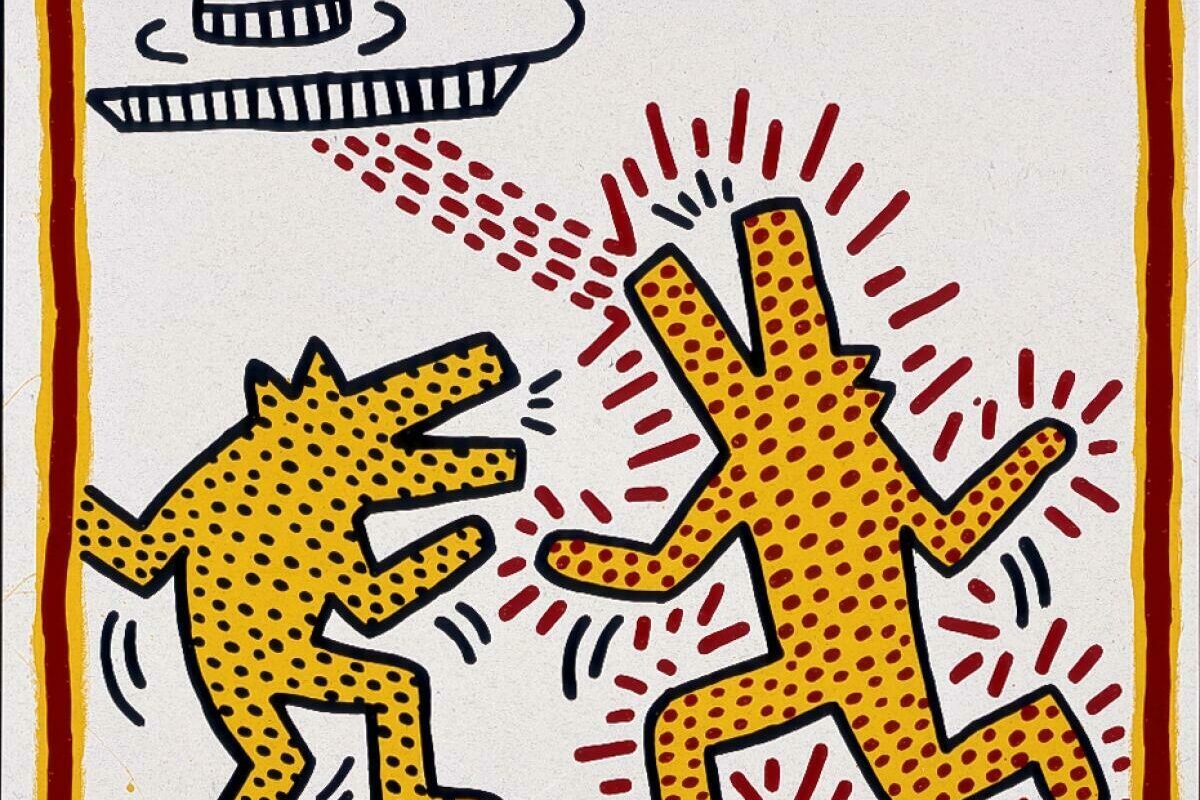Resolutely herself, Fouts built a world from her singular imagination. Find out more...
Adored by other artists including Patrick Hughes, The Connor Brothers and Banksy, Nancy Fouts, who passed away in 2019, was known for her wicked sense of humour and her incredible parties. But this magnetic woman had a serious side, executing her surreal sculptures with a perfectionism that became a hallmark of her work. In fact, her pieces are so exacting that viewers often believe them to be digitally-manipulated.
Her training as an advertising proper maker (Fouts was responsible for many of the most famous Silk Cut cigarette advertisements, including one featuring an iron with a triangle of spikes) explained her skill to some extent. But the artist always took things to the next level, even teaching herself taxidermy in order to make the stuffed animals featured in her pieces (such as Peacock War Bonnet) look realistic. Writing Fouts’s obituary in The Guardian, curator and long-term collaborator James Putnam noted “she was practically minded, self-sufficient and ingenious in finding solutions to any technical problems that might arise.”
Order in the chaos
This practicality was at the heart of the artist’s process. Fouts’s work began with her encyclopedic collections – intensely curated groups of objects from which she constructed her pieces. In her Camden home, hundreds of black flies were pinned meticulously onto card, dead chicks crowded jars and drawers opened to reveal eyeball upon fake eyeball. It was from these gatherings of the weird and wonderful that she created her stories: looking at a pair of false teeth and a purse one day, she decided they fitted together and Purse With Teeth was born; in other pieces, eyes look out from police whistles and owls sport butterfly masks.
The collections were an integral part of Fouts’s famed Camden home. When the Gothic Revival mansion was put up for sale in 2020, its Brothers Grimm-like innards were revealed in a slew of newspaper articles that acted as a window onto her imagination: pictures hung askew on the walls, sculptures jostled for space with rosettes, books and ephemera. Such was the enchanting nature of her house that the Royal Academy once invited the public for a nose round during a ticketed event.
A life well lived
Fouts’s home was a reflection of an extraordinary life. The artist arrived in London from America aged just 16, destined for finishing school and life as a debutante. However, she had other plans and eschewed that future in favour of study at the Chelsea School of Art and the Royal College of Art while simultaneously launching her career painting shopfronts in the Swinging London of the 1960s. By the beginning of the next decade, the advertising prop-making company she launched with her then-husband Malcolm Fowler had gone from strength to strength, scooping industry awards for huge campaigns and album cover art. By the late 1980s, when she and Fowler launched the Fitzrovia gallery that took their names, the artist had eschewed commercial work in favour of doing what she loved. In an interview with Studio International, she explained, “I like to make money. I need to make money, but it isn’t that I value worth that much. I value that it is my idea, damn it! That’s what I get a kick out of.”
Her work reflected a dark sense of humour that was sometimes shocking. In 2011, she sent a hearse around London with a coffin inside and funeral flowers that spelled out the word ‘bastard’ ahead of an exhibition launch. It garnered curious looks and plenty of phone snaps from passers-by – especially when it ‘broke down’ in Piccadilly Circus and got a parking ticket in Soho. Elsewhere, electric rocking chairs, Victorian gloves shrunk over skeletal hands and urns turned to ash trays reflected a tendency towards the macabre.
The black humour at the heart of Fouts’s work may seem frivolous, but it has an intently serious side, reflecting a desire to make viewers consider their viewpoints on big topics – from religion to nature. Fouts’s pieces may invite viewers to laugh, but in doing so, they create uncomfortable questions about the way we see the world.
“Black humour can create an alternative way of seeing things, and is an accessible way to tackle controversial themes," she explained, in a previous interview with Hang Up.
When Fouts passed away it was a sad loss for the industry and all who knew her. Her unique take on surrealism was born out of her unique personality, and she brought pleasure to many by doing exactly what she wanted. That’s certainly something to aspire to.
Fouts is one of the artists featured in our current exhibition, Game Changers. Browse available works from the artist, including a new edition release below.

































